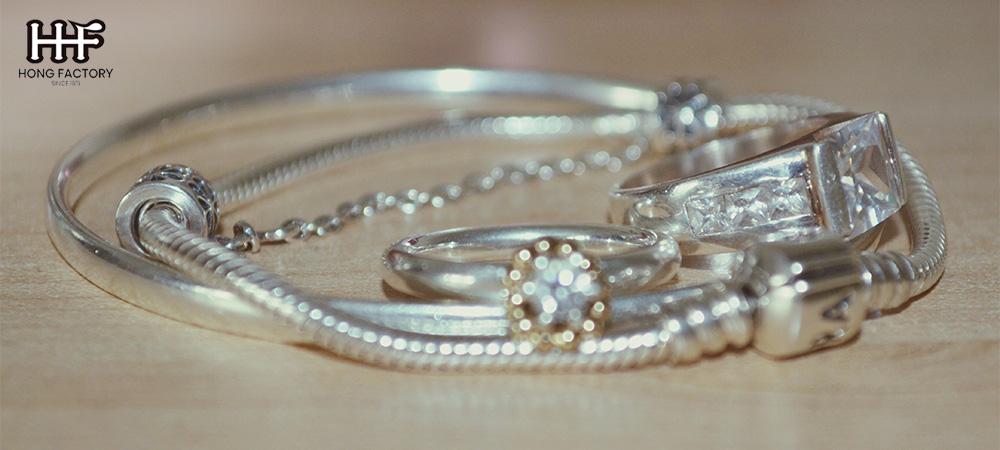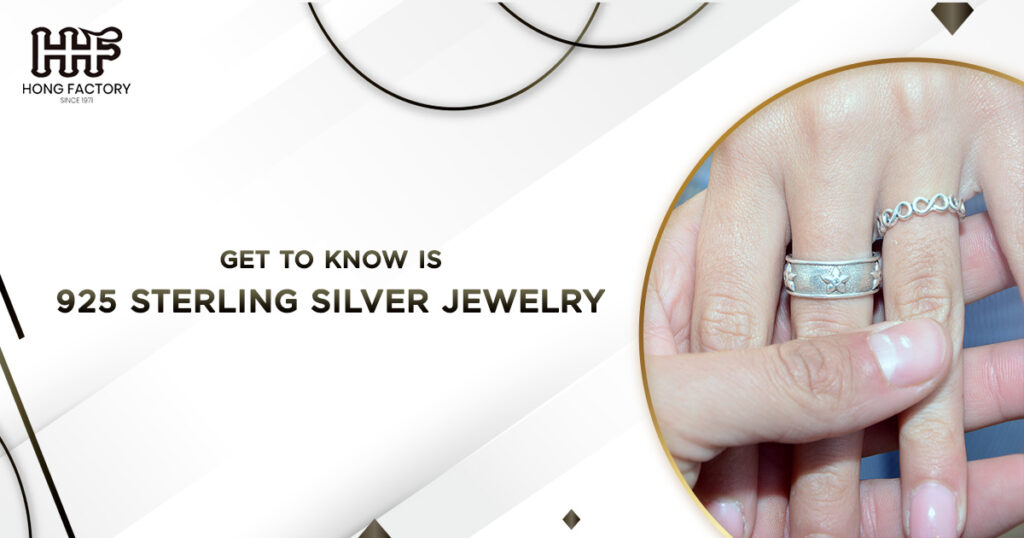925 Sterling Silver is a high-quality silver alloy used in jewelry making. The number “925” signifies that the piece contains 92.5% pure silver, with the remaining 7.5% typically made up of other metals, usually copper. This combination enhances the durability and strength of the silver, making it suitable for crafting intricate and long-lasting jewelry pieces.
Composition and Properties
Purity and Alloy
Pure silver, also known as fine silver, is too soft for practical use in jewelry. To enhance its strength, it is alloyed with other metals. Is 925 Sterling Silver, 92.5% of the alloy is pure silver, while the remaining 7.5% is usually copper. This combination retains the desirable properties of silver while improving its durability.
Physical Properties
- Color and Luster : Sterling Silver has a bright, white metallic luster that is highly reflective.
- Durability : The addition of copper makes Sterling Silver more durable and less prone to scratching and bending.
- Malleability : Despite its enhanced strength, Sterling Silver remains malleable, allowing jewelers to create intricate designs.
Why Choose 925 Sterling Silver?
Affordability
One of the primary reasons people choose 925 Sterling Silver is its affordability. While it offers the look and feel of pure silver, it comes at a fraction of the cost. This makes it accessible to a broader audience without compromising on quality.
Versatility
Sterling Silver is incredibly versatile and can be used to create a wide range of jewelry pieces, including rings, necklaces, bracelets, and earrings. Its neutral color complements various gemstones and other metals, making it a popular choice for mixed-metal designs.
Hypoallergenic Properties
Sterling Silver is generally hypoallergenic, making it suitable for individuals with sensitive skin. Unlike some other metals, it does not contain nickel, which is a common allergen.

Common Misconceptions About 925 Sterling Silver
Tarnishing
One common misconception is that tarnishing indicates poor quality. In reality, tarnishing is a natural process that occurs when silver reacts with sulfur compounds in the air. It does not affect the metal’s integrity and can be easily cleaned.
Magnet Test
Some people believe that real silver should be magnetic. However, silver is not magnetic, and neither are the metals typically alloyed with it. If a piece of jewelry is attracted to a magnet, it is not genuine Sterling Silver.
How to Identify Real 925 Sterling Silver
Hallmarks
The most reliable way to identify real 925 Sterling Silver is by looking for hallmarks. Genuine pieces are often stamped with “925,” “Sterling,” or “Ster.” These marks indicate the silver content and authenticity.
Acid Test
An acid test can also determine the authenticity of Sterling Silver. A small drop of nitric acid is applied to the jewelry. If the metal turns green, it is not real silver. Genuine Sterling Silver will show a creamy white color.
Professional Appraisal
For high-value pieces, a professional appraisal can provide a definitive answer regarding the authenticity and value of the jewelry.
Caring for 925 Sterling Silver Jewelry
Cleaning
Regular cleaning is essential to maintain the luster of Sterling Silver. Use a soft cloth and a mild soap solution to gently clean the jewelry. Avoid using harsh chemicals or abrasive materials.
Storage
Store Sterling Silver jewelry in a cool, dry place, preferably in an airtight container or a tarnish-resistant pouch. This helps prevent tarnishing and scratches.
Polishing
Occasional polishing with a silver polishing cloth can restore the shine of Sterling Silver. Be gentle to avoid scratching the surface.
Popular 925 Sterling Silver Jewelry Pieces
Rings
Sterling Silver rings are popular for their durability and beauty. They can be adorned with various gemstones or left plain for a classic look.
Necklaces
Sterling Silver necklaces come in various styles, from delicate chains to bold statement pieces. They are versatile and can be worn with casual or formal attire.
Bracelets
Sterling Silver bracelets are available in numerous designs, including bangles, cuffs, and charm bracelets. They are perfect for stacking or wearing alone.
Earrings
Sterling Silver earrings range from simple studs to elaborate chandelier designs. They are lightweight and comfortable for everyday wear.

The Environmental Impact of Sterling Silver
Sustainable Practices
Many jewelers are adopting sustainable practices in the production of Sterling Silver jewelry. This includes using recycled silver and ensuring ethical sourcing of materials.
Longevity
Sterling Silver jewelry is durable and long-lasting, reducing the need for frequent replacements. This contributes to a lower environmental impact compared to disposable fashion jewelry.
Why doesn’t 925 sterling silver turn black after being used for a long time?
Is 925 sterling silver can turn black over time due to several factors, but it can also remain untarnished with proper care and usage. Here are the main reasons why 925 sterling silver might not turn black even after prolonged use:
- Regular Wear and Maintenance : Wearing sterling silver jewelry regularly can help prevent tarnish. The constant rubbing from skin and clothes can keep the tarnish off, as the friction helps to polish the silver naturally.
- Proper Storage : Storing silver jewelry in a dry, airtight environment can prevent exposure to air and humidity, which are common causes of tarnish. Using anti-tarnish strips or cloths in storage can also help.
- Avoiding Chemicals : Keeping silver jewelry away from chemicals found in lotions, perfumes, cleaning products, and chlorinated water can prevent tarnish. These chemicals can accelerate the oxidation process that causes silver to turn black.
- Body Chemistry : Individual body chemistry can affect how quickly silver tarnishes. Some people have natural body oils that can cause rapid oxidation, while others do not, which can result in their silver jewelry remaining untarnished for longer periods.
- Environmental Factors : Avoiding highly polluted environments where hydrogen sulphide is present can also help prevent tarnish. Hydrogen sulphide reacts with silver to form a black layer of silver sulphide.
- Quality of the Alloy : The quality of the alloy and the manufacturing process can influence how quickly silver tarnishes. A well-made piece with a good mixture of metals and proper finishing techniques is less likely to tarnish quickly.
By following these practices, it is possible to keep 925 sterling silver jewelry looking bright and untarnished for a long time.
Conclusion
925 Sterling Silver is undoubtedly real jewelry, offering a perfect blend of beauty, durability, and affordability. Its rich history, versatile applications, and hypoallergenic properties make it a favorite among jewelry enthusiasts. By understanding how to identify and care for Sterling Silver, you can enjoy its timeless elegance for years to come. Whether you’re looking for a statement piece or a daily accessory, 925 Sterling Silver is a reliable and stylish choice.

